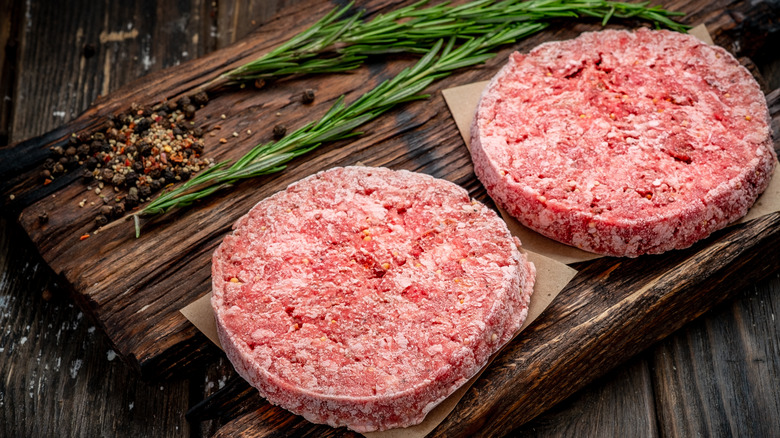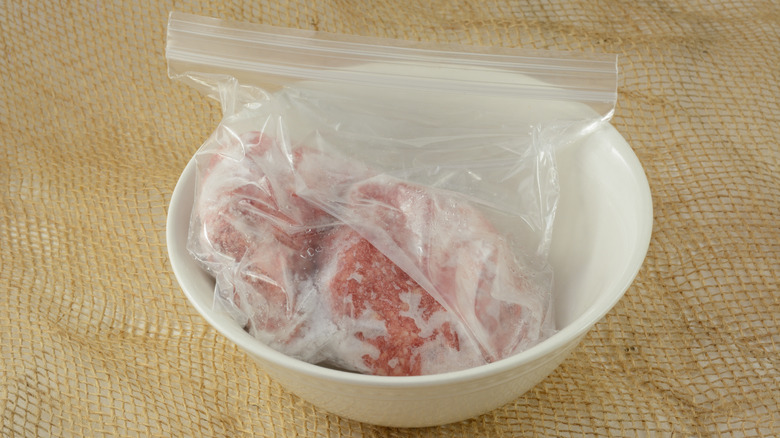Why You Should Avoid Cooking Ground Beef From Frozen
It happens to us all — dinner time rolls around and you realize you never took the frozen meat out to defrost. Cue the immediate facepalm and audible sigh. While it's tempting (and feasible) to toss that pound of frozen ground beef block directly into the hot pan, it's really not something you want to do unless you are in absolute dire need. That microwave of yours may be whispering to give it a whirl as well, but the defrost button is just a wolf in sheep's clothing — not much good (or safe, in this instance) comes out of microwaved meat.
When you plop that frozen ground beef directly into a hot pan, not only will it take almost twice as long to cook, it will result in a less-than-desirable taste and texture. Why? The bulk of the flavor in meat tends to reside in its natural juices. Once frozen, the natural juices crystallize, and there's nothing wrong with that ... until those crystals begin to defrost. If those crystals are going straight from iced to a hot pan, they will be cooked off and lost, and so will the flavor and moisture. Think about how when you microwave a frozen dinner or a handful of frozen Brussels sprouts in a bowl — there is a ton of liquid that's leftover in the bottom of the dish as it heats through. When given proper time to defrost, the natural juices are able to permeate back into the meat prior to cooking.
How to expedite the defrosting process with water
While the best and safest way to defrost ground beef is in the refrigerator overnight, all is not lost if you want to cook frozen ground beef pronto while retaining the texture and flavor. There are a couple of methods that will speed up the defrosting process and maintain the meat's integrity much better than adding it straight to the pan.
The first method is to place the tightly-wrapped beef in a bowl of cold water and keep it submerged (you can place a heavy plate or a canned good to facilitate this). Change out the water every 30 minutes to maintain a cold temperature. This process will take roughly between one to four hours depending on the size.
The second option is a little more wasteful of water. Place the securely-wrapped ground beef in a plastic bag (or ensure the packaging is leakproof) and sit it under cold running water while it thaws. This may be the better option for smaller portions of meat.

